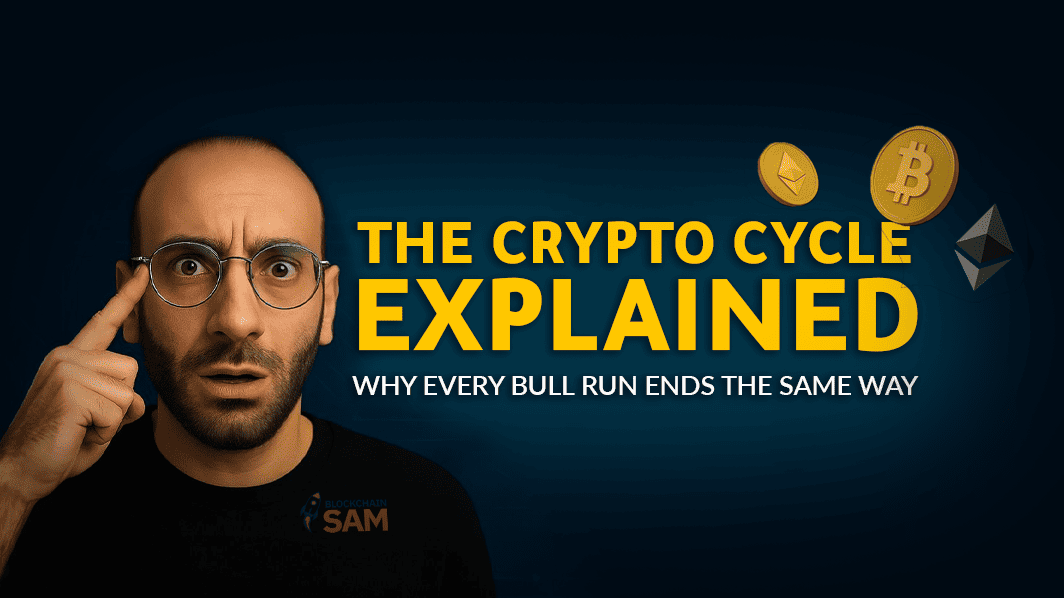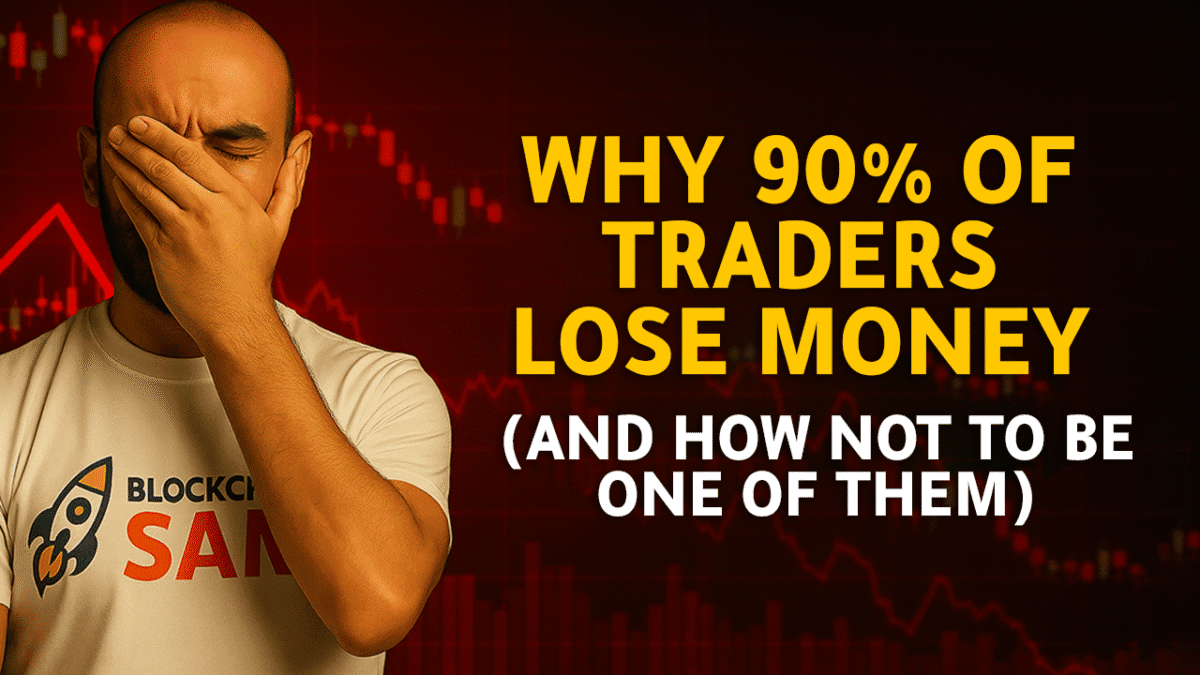Spot vs Futures Explained → Step-by-Step, Risks, & Examples (A Guide to Level Up Your Trading)
Hey everyone, Blockchain Sam here. If you’ve followed my guides, you’ve successfully created an account, deposited funds, and made your first “spot” trade. You’re no longer a complete beginner—you’re an owner of a digital asset.
But as you explore platforms like Binance, you’ve probably seen a tab labeled “Futures” or “Derivatives” and wondered, “What’s that all about?” Today, we’re leveling up. We’re going to break down the critical differences between Spot trading (what you’ve done so far) and Futures trading.
Understanding this is key to becoming a more knowledgeable crypto participant. But be warned: with greater potential comes significantly greater risk. Let’s get into it.
“
What is Spot Trading? The Foundation
Spot trading is the most straightforward way to interact with crypto. It’s what most people think of when they talk about “buying Bitcoin.”
The Core Concept: You are buying or selling a cryptocurrency for immediate delivery and ownership. You pay the current market price (the “spot” price) and the assets are transferred directly to your wallet.
Think of it like this: You go to a currency exchange and trade your US Dollars for Euros. You hand over the dollars, and they immediately hand you the Euros. You now own those Euros and can walk away with them.
In crypto, when you buy 1 ETH on the spot market, you own 1 ETH. You can hold it, sell it later, or withdraw it to your private wallet.
How to Make a Spot Trade (A Quick Recap):
- Go to the “Spot” trading section.
- Select a pair, like
BTC/USDT. - Place a “Buy” order. You’re using your USDT to buy actual BTC.
- Transaction completes. The BTC is now in your spot wallet. You own it.
Pros:
- Simple and intuitive.
- You have direct ownership of the asset.
- Lower risk; you can only lose your initial investment (the asset’s value can’t go below zero).
Cons:
- You only profit when the asset’s price goes up.
What is Futures Trading? Speculating on Price
Futures trading is a completely different beast. It’s a form of derivatives trading.
The Core Concept: You are NOT buying or selling an actual cryptocurrency. Instead, you are buying or selling a contract that agrees to buy or sell a crypto at a predetermined price at a specific time in the future. In crypto, “Perpetual Futures” (which don’t have an expiry date) are most common.
Think of it like this: You are making a highly sophisticated bet on whether an asset’s price will go up or down. You don’t own the asset itself, just the contract that tracks its price.
This introduces two game-changing concepts:
- Going Long vs. Going Short:
- If you think the price of BTC will rise, you “go long” or Buy a futures contract.
- If you think the price of BTC will fall, you “go short” or Sell a futures contract. This allows you to potentially profit from a declining market.
- Leverage: This is the most powerful—and dangerous—tool in futures trading. Leverage allows you to open a position that is much larger than your actual capital. For example, with 10x leverage, you can open a $10,000 position with only $1,000 of your own money. The exchange lends you the rest.
Example of a Futures Trade (Going Long):
- Go to the “Futures” or “Derivatives” section.
- Transfer capital (e.g., $100 USDT) from your Spot Wallet to your Futures Wallet. This is your margin.
- Select a contract, like
BTCUSDT Perpetual. - Choose your leverage, for example,
10x. Your $100 margin now controls a $1,000 position ($100 x 10). - You predict BTC will go up, so you click “Buy/Long”. You now hold a $1,000 long position on BTC.
The Critical Risks of Futures Trading (READ THIS CAREFULLY!)
Futures trading is not for beginners or the faint of heart. The potential for rapid gains is matched by the potential for catastrophic losses.
1. Liquidation: The Ultimate Risk 💧
Because you are trading with borrowed funds (leverage), the exchange needs to protect itself. If the market moves against your prediction, your position will be automatically closed, and you will lose your entire initial margin. This is called liquidation.
- Example: You take that $1,000 long position on BTC with 10x leverage, using your $100 margin. If the price of BTC drops by just 10%, your position’s loss will be $100 ($1,000 x 10%). Since this is the entire amount of your own money, the exchange will liquidate you. Your position is closed, and your $100 margin is gone forever.
The higher your leverage, the smaller the price movement needed to liquidate you. At 50x leverage, just a 2% move against you can wipe you out.
2. Leverage is a Double-Edged Sword 🗡️
Leverage amplifies everything.
- Gains: If the price in our example went up by 10%, your $1,000 position would be worth $1,100. Your profit would be $100, a 100% return on your initial $100 margin.
- Losses: As seen above, it amplifies losses just as quickly, leading to liquidation.
3. Funding Fees
With perpetual futures, there are small payments exchanged between long and short positions every few hours, called funding rates. Depending on market sentiment, you might have to pay these fees, which can slowly eat away at your capital, especially if you hold a position for a long time.
Head-to-Head: Spot vs. Futures
| Feature | Spot Trading | Futures Trading |
| Ownership | ✅ You own the actual crypto. | ❌ You own a contract, not the crypto. |
| Leverage | ❌ None (or very low). | ✅ Yes, often up to 125x. |
| Profit Direction | Price must go up to profit. | Can profit if price goes up OR down. |
| Risk Level | Lower. You only lose what you invest. | Extremely High. You can be liquidated and lose your entire margin very quickly. |
| Best For | Investors, HODLers, beginners. | Experienced, short-term traders. |
My Final Word: Walk Before You Run
Spot trading is about investing in an asset you believe in for the long term. Futures trading is about speculating on short-term price movements.
My advice is unequivocal: Master spot trading first. Understand the market, learn how to read charts, and develop a strategy. Only consider moving to futures trading when you have done extensive research, understand the concepts of margin and liquidation inside and out, and are fully prepared to lose every dollar you put into your futures wallet.
Always start with very low leverage (2x-3x) and a small amount of capital you are 100% willing to lose.
Stay safe, trade smart, and never stop learning.
Blockchain Sam
Disclaimer: This article is for educational purposes only and should not be considered financial advice. Futures trading involves substantial risk and is not suitable for all investors. You could lose all of your initial investment. Please do your own research (DYOR).







